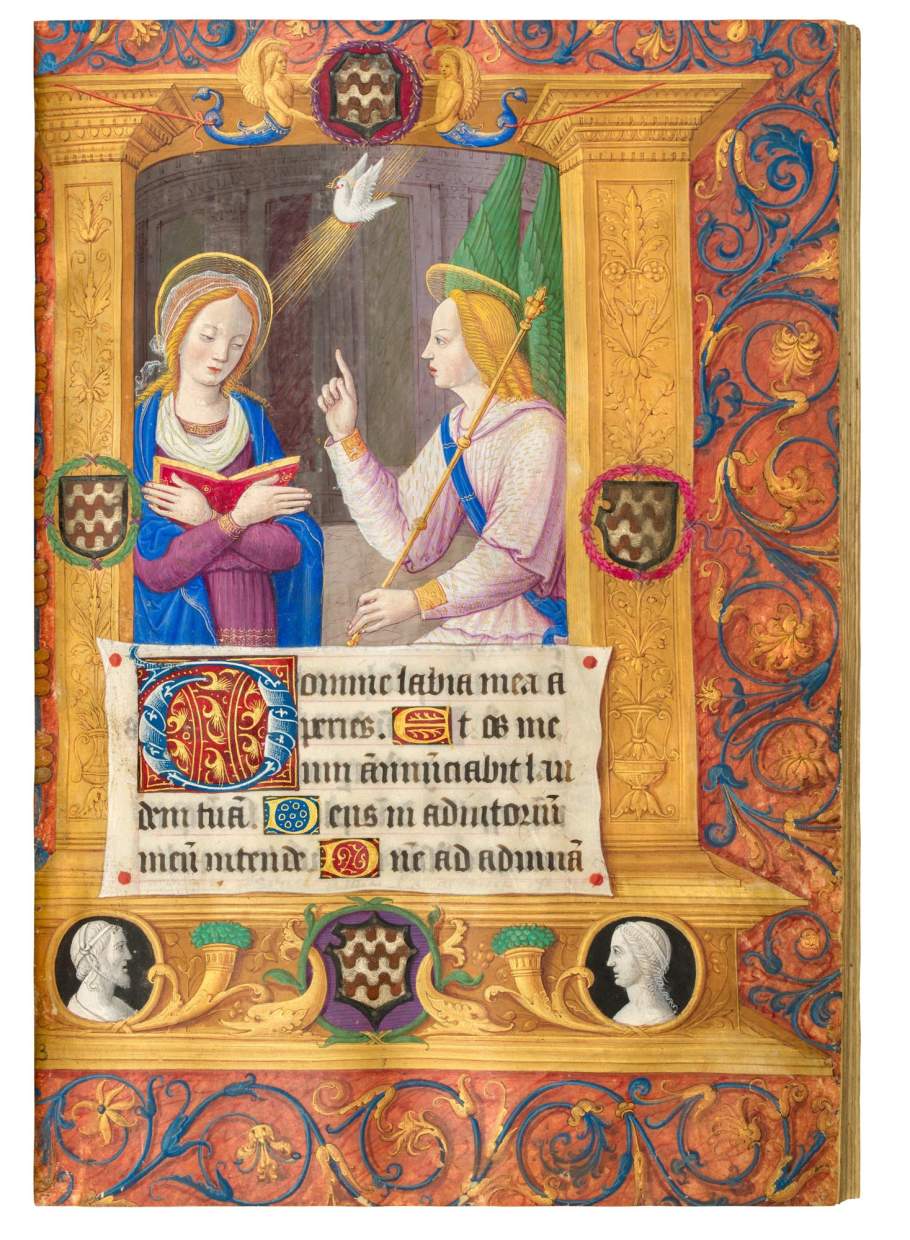Artworks


Rochechouart Book of Hours
Illuminated manuscript on vellum,
by the circle of Jean Poyer and Giovanni Todeschino
France, Tours, c. 1500
254 x 170 mm. 114 leaves, 5 large miniatures
fol. 68: David playing his harp


Illuminated manuscript on vellum,
by the circle of Jean Poyer and Giovanni Todeschino
France, Tours, c. 1500
254 x 170 mm. 114 leaves, 5 large miniatures
fol. 62v: Christ carrying the Cross


Illuminated manuscript on vellum,
by the circle of Jean Poyer and Giovanni Todeschino
France, Tours, c. 1500
254 x 170 mm. 114 leaves, 5 large miniatures
fol. 84: Raising of Lazarus
Hide caption

Illuminated manuscript on vellum,
by the circle of Jean Poyer and Giovanni Todeschino
France, Tours, c. 1500
254 x 170 mm. 114 leaves, 5 large miniatures
fol. 65v: Pentecost
Hide caption

Illuminated manuscript on vellum,
by the circle of Jean Poyer and Giovanni Todeschino
France, Tours, c. 1500
254 x 170 mm. 114 leaves, 5 large miniatures
fol. 65v: Pentecost
Hide caption
In these miniatures, the graceful figures are dressed in elegant, masterfully designed draperies, while the sensitivity for space and spatiality highlights a certain cool aloofness. The multitalented Poyer headed a prolific workshop of captivating artists who unfailingly applied the master’s style. The execution of Christ carrying the Cross is particularly excellent and comes closest to Poyer’s own refined hand where figures have sharp, almost portrait-like features. However, the manner of zooming in on the protagonists is unusual - it was a new method of dramatic close-up invented by Jean Bourdichon. The five full-page compositions are due to a fascinating collaboration between an artist close to Poyer and a master with strong Italian influences, possibly the renowned painter Giovanni Todeschino who came to Tours with the exiled King of Naples, Frederick of Aragon.
All miniatures are surrounded by impressive Renaissance frames in liquid gold, some with subjects referring to the main topic of the miniature, as at the Office of the Dead, where skeletons perform a danse macabre and small pleurants sit in prayer. Intricate plays of optical illusions and deliberate confusion between back and front can be observed in the Carrying of the Cross and the King David miniature. It is as if the beholder looks through a three-dimensional, golden frame that is embellished with jewels and pearls.
The present deluxe Book of Hours boasts an unbroken line of provenance within the same noble family. Its prominently added coat of arms is related to - but not the same as - that of Rochechouart de Mortemart, while extensive 16th- and 17th-century family notes refer to the Damas-Rochechouart family. The earliest begin in the 1520s with the births of the sons of Georges Damas (c. 1473/8 - 1552) and Jeanne de Rochechouart. Jeanne was the daughter of François de Rochechouart de Mortemart (1450-1530) and Blanche d’Aumont (d. 1530 - some of their quite fine manuscripts are preserved in the BNF). François had an illustrious career in the service of Louis XII and made it to governor of Genoa. Jeanne, born in 1493, was the only daughter to survive childhood, to marry and to have children. Yet, the coat of arms suggests that Jeanne was not the first patron of the book.
Whereas the coat of arms of Rochechouart is De gueules, à trois fasces nébulées d’argent, the arms here is surrounded à la bordure d’azur, chargée de huit bésants d’or and belonged to the Rochechouart de Jars. The seigneury of Jars was part of the Rochechouart family inheritance for many generations, yet it was not inherited by Jeanne’s father François, but by his younger brother Jean (d. 1498). When he died soon after the birth of his first child Guillaume (1497-1568), the boy was placed under the tutelage of his uncle François. The coat of arms of Rochechouart de Jars suggests that the manuscript was made for Guillaume. Likely, he gave the manuscript to his cousin Jeanne, who was his elder by three years. Her descendants handed down the book and added family records until 1638.
This manuscript is also shown in a Spotlight.



